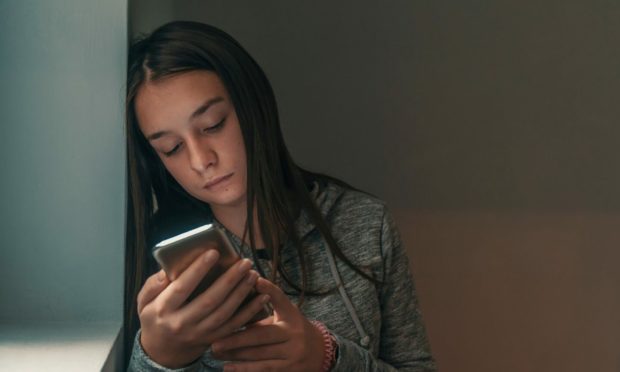School closures, lockdowns and social distancing rules over the past 18 months have meant that young people have been spending more time online, communicating with friends via apps and social media sites. This contact has been a lifeline for many but it also comes with its risks.
Those in relationships will have spent more time speaking to partners online, which can increase pressure to send nude photos of themselves or engage in sending sexual messages. Others may have become involved in sharing such material when they are being groomed by someone they have met online.
When someone shares a sexual message, naked or semi-naked image or video with someone else online it is called sharing nudes or sexting. Nudes can be sent using phones, tablets and laptops and young people can share them across any app, site or game, including during a livestream. A lot of nude images are also shared on social media channels.
Children face peer pressure
Parents may wonder why their children send nudes or sexual messages. Peer pressure, being blackmailed, harassed or threatened and trying to increase self-esteem are among the many reasons.
Sexting is risky. If sexual content is shared on any online platform, there’s a risk of losing control of it and, once public, it can be saved and copied by others. Young people can also have their photos, messages and videos shared without their consent or be bullied about them. This can lead to them feeling distressed, embarrassed and ashamed.
Offering support to children
Parents may feel upset, angry or confused if they are concerned about their child sharing sexual content and children may also feel anxious talking about what’s happened. Parents can reassure their children by offering support and reminding them they can always talk to them, another trusted adult, or Childline. By exploring online platforms together, both parents and their children can get a better understanding of appropriate online behaviour.
Backed up by an ambitious #OnlineSafetyBill that comprehensively tackles child sexual abuse, the #ChildrensCode shows that regulation works and can change how companies design their sites so they become truly safe for children.https://t.co/ZeQXBNuwIn
— NSPCC (@NSPCC) September 2, 2021
Parents and young people can report a sexual image or video to the police, as well as on the social media platform where the image or video is shared. Net Aware, a website the NSPCC runs in partnership with O2, provides advice on how to do this. Young people can use Childline and the Internet Watch Foundation’s discreet Report Remove tool to see if the content can be taken down. During the process, young people can get support from Childline.
For anyone concerned about the welfare of a child, they can contact the NSPCC helpline on 0808 800 5000 or at nspcc.org.uk. Children can call Childline on 0800 111 or at childline.org.uk.
Carla Malseed is NSPCC Scotland campaigns manager

